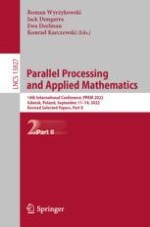2023 | OriginalPaper | Chapter
Structural and Electronic Properties of Small-Diameter Carbon NanoTubes: A DFT Study
Authors : Bartosz Brzostowski, Artur P. Durajski, Konrad M. Gruszka, Jacek Wojtkiewicz
Published in: Parallel Processing and Applied Mathematics
Publisher: Springer International Publishing
Activate our intelligent search to find suitable subject content or patents.
Select sections of text to find matching patents with Artificial Intelligence. powered by
Select sections of text to find additional relevant content using AI-assisted search. powered by
